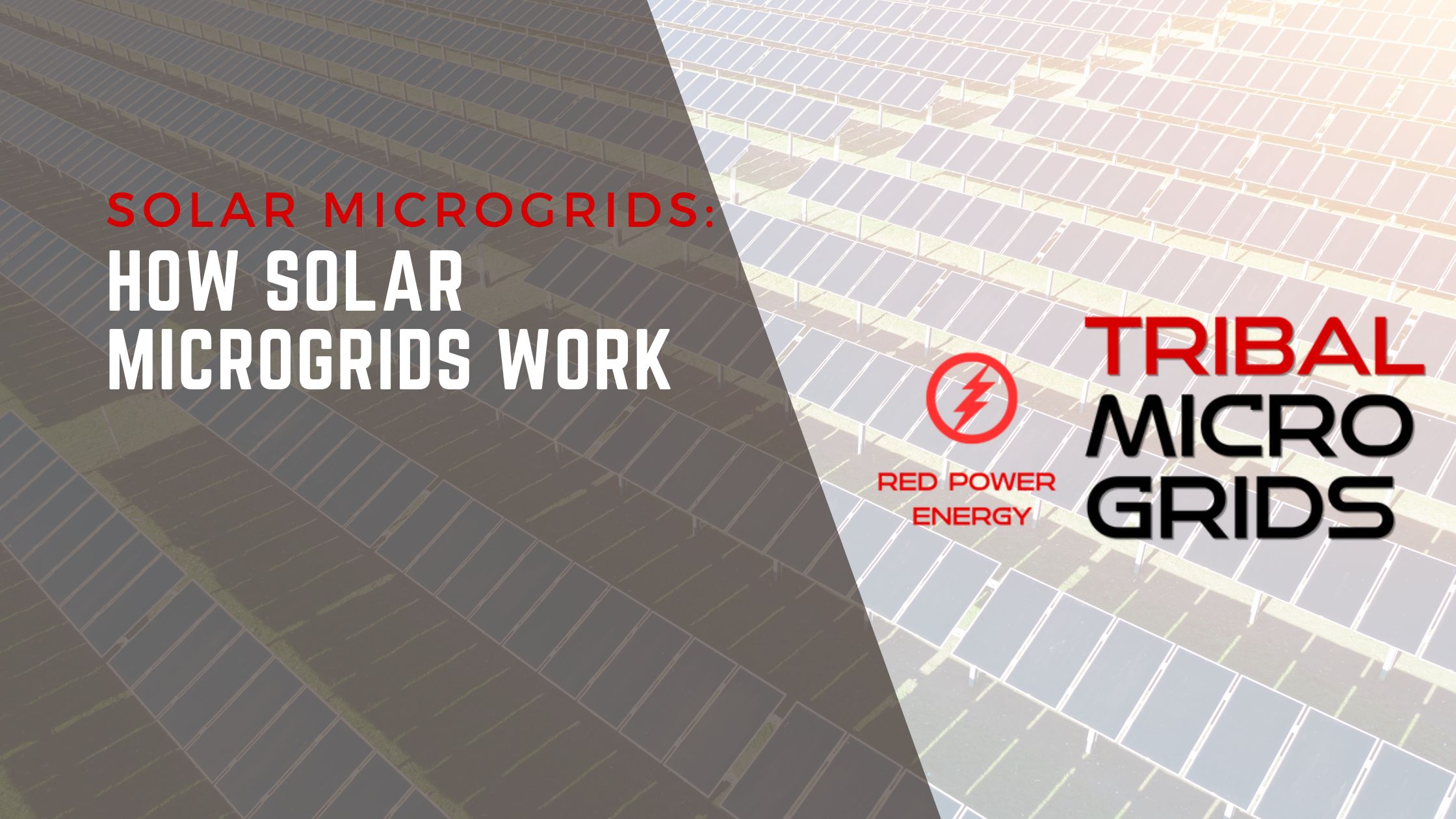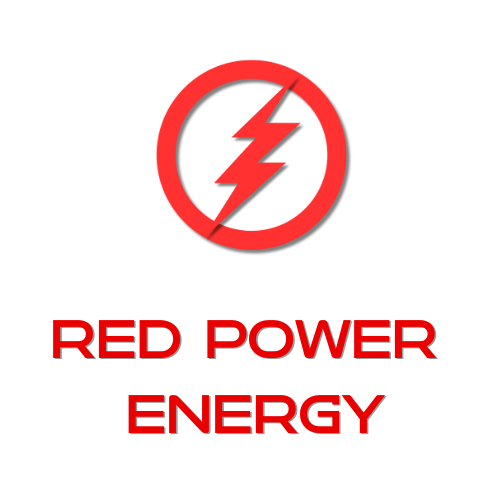Section 2: How Solar Microgrids Work

Section 2: How Solar Microgrids Work
- Tribal Solar
- Importance of Solar Microgrids in Native Communities
- Funding Opportunities and Government Incentives
- Tribal Utility Authority
- Tribal Solar Microgrids
- Overview of Tribal Solar Microgrids
- Technical Specifications of Solar Microgrids
- Safety Considerations for Solar Microgrids
- Economic Benefits of Solar Microgrids
- Case Studies of Successful Tribal Solar Microgrid Projects
- Building Community Support for Solar Microgrids
- The Future of Tribal Energy with Solar Microgrids
Section 2: How Solar Microgrids Work – A Detailed Exploration
Solar microgrids represent one of the most promising developments in sustainable energy technology, combining solar power generation with smart distribution systems to create reliable, independent power networks. This comprehensive examination will delve into the intricate workings of solar microgrids and their transformative potential in our energy landscape.
Core Components of Solar Microgrids
- Solar Power Generation System
- Photovoltaic (PV) panels
- Solar inverters
- Mounting structures
- DC combiners and optimizers
- Maximum power point tracking (MPPT) controllers
- Energy Storage Infrastructure
- Battery banks (typically lithium-ion)
- Battery management systems
- Charge controllers
- Thermal storage units
- Power conditioning equipment
- Control and Management Systems
- Microgrid controllers
- Energy management software
- Smart meters
- Monitoring interfaces
- Communication networks
- Distribution Network
- Power lines and cables
- Transformers
- Circuit breakers
- Protection devices
- Switching equipment
Microgrid Operational Principles
Generation Process
Solar microgrids begin with photovoltaic panels converting sunlight into direct current (DC) electricity. These panels are typically arranged in arrays to maximize solar exposure and energy generation capacity. The DC power is then converted to alternating current (AC) through inverters, making it compatible with standard electrical equipment and appliances.
Storage Integration
Energy storage systems play a crucial role in maintaining consistent power supply:
- Excess power generated during peak sunlight hours is stored in batteries
- Stored energy is used during nighttime or cloudy conditions
- Advanced battery management systems optimize charging and discharging cycles
- Multiple storage technologies may be combined for enhanced efficiency
Smart Control Systems
The intelligence of solar microgrids lies in their sophisticated control systems:
- Load Management
- Real-time monitoring of power demand
- Automatic load shedding during peak periods
- Priority-based power distribution
- Demand response capabilities
- Grid Interaction
- Seamless switching between grid-connected and island modes
- Power export/import management
- Grid synchronization
- Fault detection and isolation
- System Optimization
- Performance monitoring
- Predictive maintenance
- Weather forecasting integration
- Energy efficiency algorithms
Power Flow Management
Solar microgrids employ advanced power flow management strategies:
Normal Operation
- Solar generation supplies primary power
- Battery storage provides backup
- Grid connection maintains stability
- Load balancing ensures efficient distribution
Island Mode
- Automatic disconnection from main grid during outages
- Independent operation using solar and storage
- Critical load prioritization
- Frequency and voltage regulation
Grid-Connected Mode
- Power exchange with main grid
- Revenue generation through excess power sale
- Stability support for main grid
- Demand response participation
Performance Optimization
Several factors contribute to optimal solar microgrid performance:
- System Design
- Proper sizing of components
- Strategic placement of solar arrays
- Efficient distribution network layout
- Redundancy planning
- Environmental Considerations
- Solar resource assessment
- Weather pattern analysis
- Temperature impacts
- Shading analysis
- Load Profile Management
- Peak load reduction
- Load shifting strategies
- Energy efficiency measures
- Demand side management
Maintenance and Monitoring
Regular maintenance ensures reliable operation:
- Preventive Maintenance
- Solar panel cleaning
- Battery health checks
- Equipment inspection
- System calibration
- Performance Monitoring
- Real-time data collection
- Performance analytics
- Fault detection
- Efficiency tracking
- System Updates
- Software upgrades
- Hardware modifications
- Security patches
- Control system optimization
Safety and Protection
Solar microgrids incorporate multiple safety features:
- Electrical Protection
- Overcurrent protection
- Ground fault detection
- Arc flash prevention
- Lightning protection
- System Security
- Cybersecurity measures
- Access control
- Data encryption
- Backup systems
Economic Considerations
The financial aspects of solar microgrids include:
- Initial Investment
- Equipment costs
- Installation expenses
- Design and engineering fees
- Permitting and interconnection costs
- Operational Costs
- Maintenance expenses
- Monitoring costs
- Insurance
- Personnel training
- Revenue Streams
- Energy cost savings
- Grid services compensation
- Renewable energy credits
- Demand response payments
Future Developments
Solar microgrid technology continues to evolve:
- Technological Advances
- More efficient solar panels
- Advanced battery chemistry
- Improved control systems
- Enhanced integration capabilities
- Market Trends
- Decreasing component costs
- Increasing adoption rates
- New business models
- Regulatory support
Conclusion
Solar microgrids represent a sophisticated fusion of renewable energy generation, storage technology, and smart control systems. Their ability to provide reliable, sustainable power while maintaining grid independence makes them an increasingly attractive option for various applications. As technology advances and costs continue to decrease, solar microgrids will play an increasingly important role in our transition to a more sustainable and resilient energy future.
Understanding how solar microgrids work is essential for organizations considering their implementation. With proper design, installation, and maintenance, these systems can provide significant benefits while contributing to a cleaner, more sustainable energy landscape. As we continue to face challenges related to climate change and energy security, solar microgrids offer a proven solution for reliable, renewable power generation and distribution.

Red Power Energy’s commitment to advancing Tribal Solar Micro-Grids reflects a dedication to sustainable development and tribal empowerment. By offering specialized expertise and technical support, Red Power Energy partners with tribes to design, install, and maintain customized micro-grid systems, ensuring they meet the unique needs of each community. This partnership fosters resilience, supports economic growth, and promotes a cleaner, more sustainable energy future for tribal nations across the country.
- Renewable Energy Source: Utilizes solar energy, reducing dependence on fossil fuels and lowering greenhouse gas emissions.
- Energy Independence: Enables tribes to generate and manage their own power, reducing reliance on external utilities and enhancing energy sovereignty.
- Battery Storage: Stores excess energy produced during daylight, ensuring reliable power supply during nighttime or cloudy periods.
- Grid Resilience: Provides a decentralized power source that can operate independently from the main grid, offering stability during outages or natural disasters.
- Cost Savings: Lowers energy costs over time by minimizing the need for external power purchases and reducing transmission losses.
- Job Creation and Training: Supports local economic development through employment opportunities in system installation, maintenance, and management.
SECTIONS
Table of Contents
Tribal Solar Microgrid Articles
- The Future of Tribal Energy with Solar Microgrids
- Technical Specifications of Solar Microgrids
- Building Community Support for Solar Microgrids
- Safety Considerations for Solar Microgrids
- Solar Microgrids and Battery Storage Systems
- Case Studies of Successful Tribal Solar Microgrid Projects
- Planning and Feasibility Studies for Solar Microgrids
- Components of a Solar Microgrid System
- How Solar Microgrids Work
- Importance of Solar Microgrids in Native Communities
- Overview of Tribal Solar Microgrids
- Tribal Solar
We Assist Tribes With A Unique Hybrid Model That Allows Us To Assist Tribes At Any Step Of A Solar Project.
Ready to bring sustainable, cost-saving energy solutions to your community? Contact us today to schedule a free consultation and learn how we can help your tribe achieve energy independence.
Our Team
Meet the Experts Behind Our Success

Richard TallBear Westerman
Director| Tribal Energy

Eli Hopaii
Director | Strategy

Beth Lahaie
Director | Strategy

Alexa Raye
Director | Marketing

Winston Worth
Director | Projects

Castleigh Johnson
Director | Risk Management

RedPower.One
Director | Intelligence

Renewable Energy Potential
Native American lands have the potential to generate more than 17.6 terawatts of solar energy annually—enough to power the entire United States multiple times over.
Why Choose Us
Pathfinding Tribal Sovereignty Futures
At TribalMicrogrids.com, we are committed to empowering Native American communities with sustainable energy solutions that promote energy sovereignty, economic development, and environmental stewardship. Our deep understanding of tribal values and unique energy needs sets us apart, making us the trusted partner for tribes seeking customized solar and microgrid solutions.
Proven Expertise
With years of experience working exclusively with tribal communities, we have a proven track record of delivering successful renewable energy projects. From small residential installations to large-scale microgrids, our expertise ensures that each project is carefully designed, implemented, and managed to meet the specific needs of your tribe.
Innovation and Adaptability
We are dedicated to staying at the forefront of renewable energy technologies. Our team integrates the latest advancements in solar power, battery storage, and microgrid systems, offering cutting-edge solutions that enhance energy efficiency, reduce costs, and provide reliable power, even in remote areas.
Comprehensive Services
We provide end-to-end solutions, from initial consultation and feasibility studies to project management, installation, and ongoing maintenance. Our comprehensive approach ensures that your tribe’s solar project is not only successful but sustainable for the long term.
100% Native Owned, Managed And Controlled
We are proud to be 100% Native-owned, managed, and controlled, offering a deep cultural understanding that aligns our services with your tribe’s values and traditions. Our commitment to tribal self-determination ensures that your community retains full control over its energy future.
Tribal Solar Outcomes
Tribal Solar Outcomes
By engaging with TribalMicrogrids.com, tribal communities can expect to achieve significant, tangible benefits through the development of sustainable microgrid solutions. These projects not only promote energy sovereignty but also create lasting economic and environmental impacts. Our holistic approach ensures that each project aligns with tribal values and cultural considerations, fostering a brighter, more resilient future for your community.

Economic Impact of Solar Projects
Solar energy projects can create up to 5.65 full-time jobs per megawatt of installed capacity, offering substantial employment opportunities for tribes investing in renewable energy.
Gain control over your community’s energy future with reliable, sustainable power, ensuring long-term self-sufficiency.
Your tribe will gain full control over its energy resources, reducing reliance on external power grids and securing a reliable, sustainable energy supply for the future. This independence empowers your community to make decisions that align with long-term goals and values.
Create jobs, stimulate local economies, and reinvest energy savings into projects that benefit the entire community.
Our microgrid solutions contribute to local economic development by creating jobs in areas such as system design, installation, maintenance, and project management. Energy savings can also be redirected toward community development projects, improving overall quality of life.
Protect sacred lands and reduce your tribe’s carbon footprint through clean, renewable energy solutions that align with tribal values.
By transitioning to renewable energy, your tribe will reduce its carbon footprint, protect sacred lands, and promote environmental sustainability. Microgrids help preserve natural resources while contributing to broader efforts to combat climate change and protect the planet for future generations.




